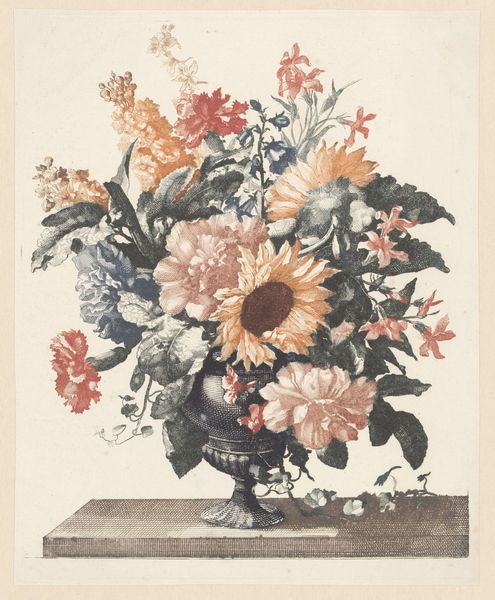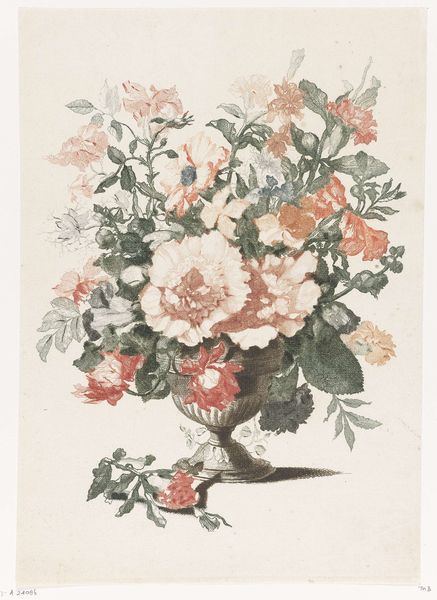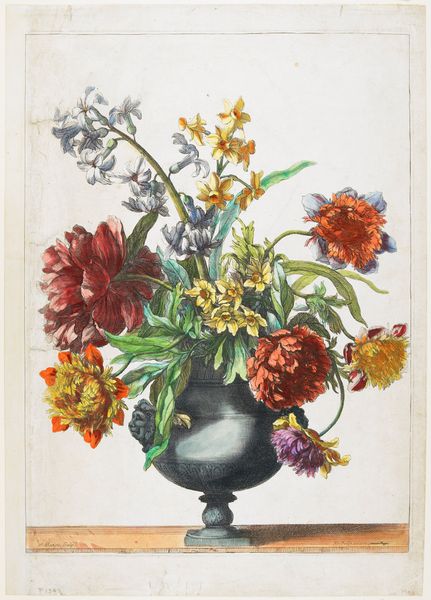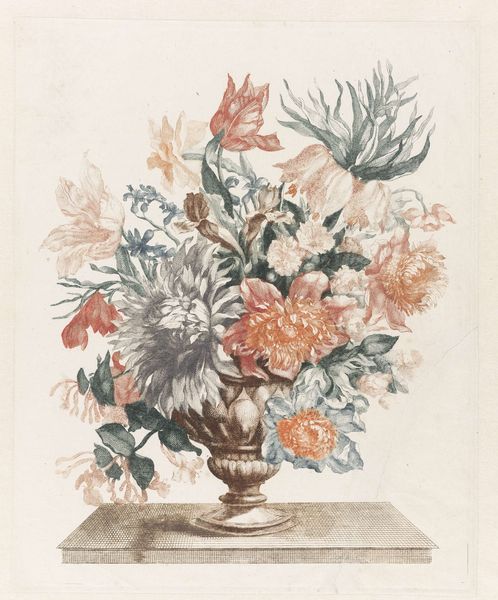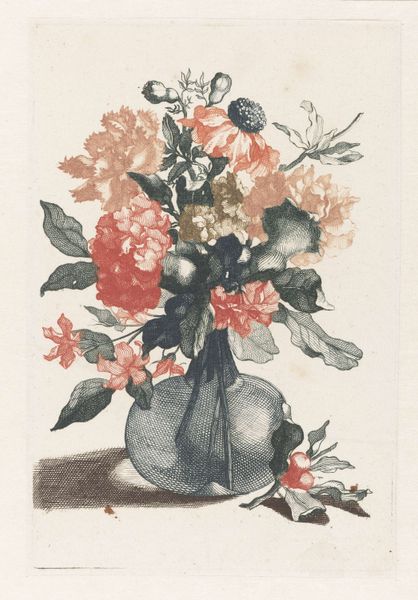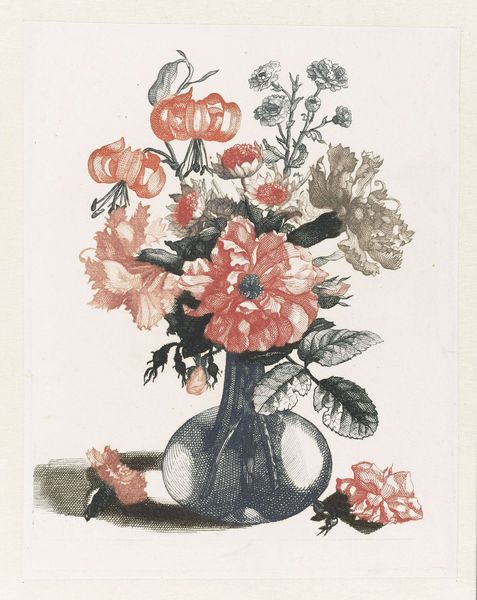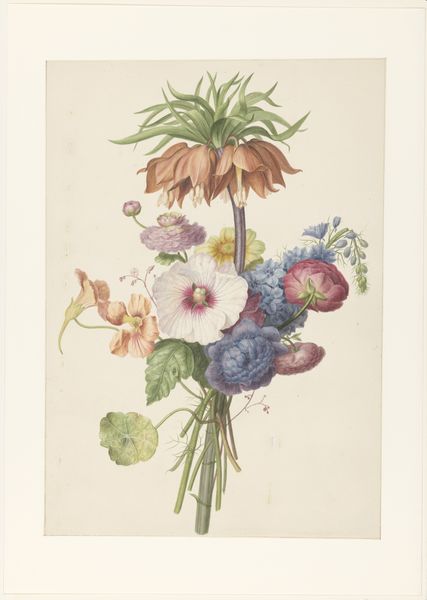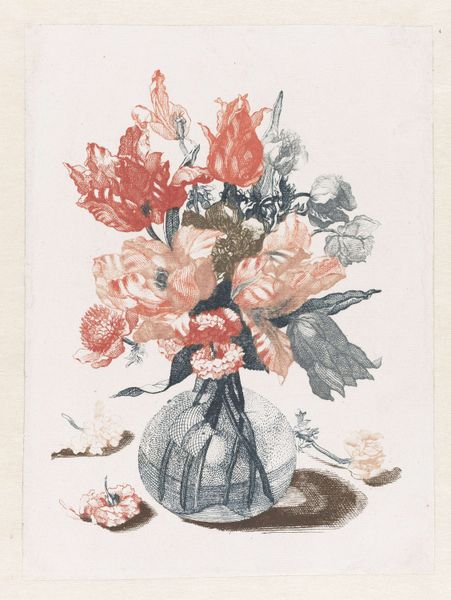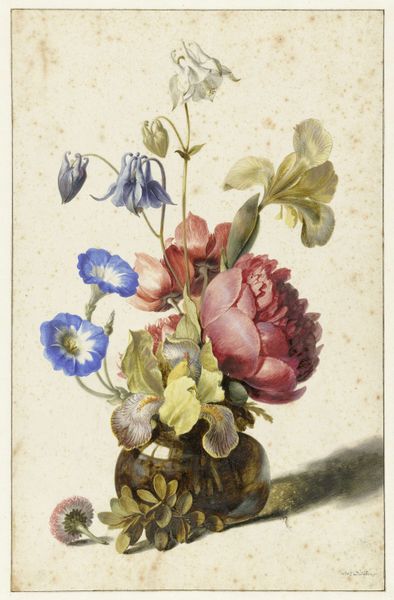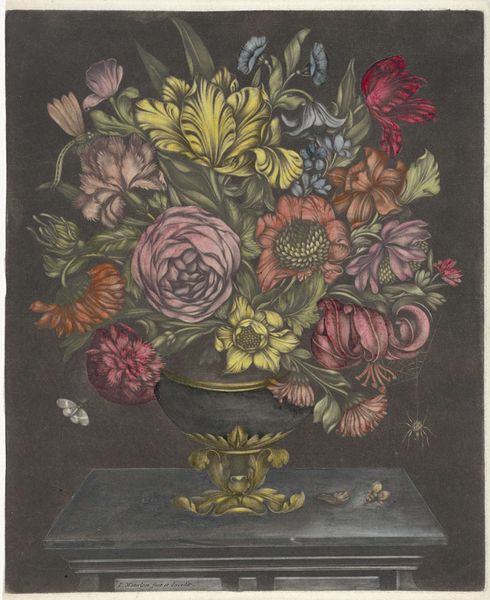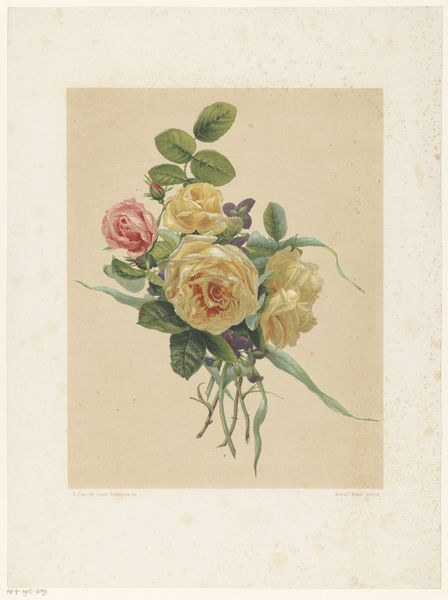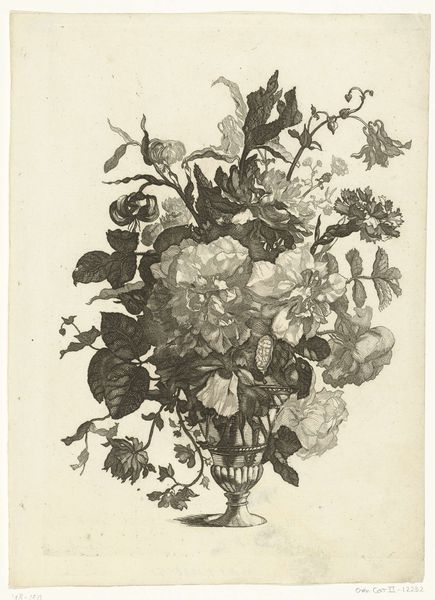
tempera, painting, watercolor
#
water colours
#
baroque
#
tempera
#
painting
#
watercolor
#
ceramic
Dimensions: height 304 mm, width 242 mm
Copyright: Rijks Museum: Open Domain
Here we have an anonymous print of flowers in glass vases. The arrangement might seem like just a pretty picture, but consider the historical context of the Dutch Golden Age, where art was deeply entwined with commerce and status. Floral paintings became incredibly popular, reflecting not only an appreciation for beauty but also the wealth and global reach of the Dutch Republic. Each flower, carefully arranged, could represent different virtues, seasons, or even trade routes, think about the tulip mania of the 17th century, where a single bulb could be worth more than a house! This print allows for wider access to the luxury and status once confined to the wealthy elite. What does it mean to make such symbols of luxury accessible? It democratizes beauty, but it also invites questions about access, value, and the stories we tell ourselves about who we are. It is no longer simply about who could afford exotic flowers. It is about broader cultural values.
Comments
rijksmuseum about 2 years ago
⋮
Johannes Teyler from Nijmegen was educated as a philosopher and mathematician, but also worked later as a military engineer. He invented a method for printing impressions in colour, for which he received a patent in 1688. The colours had to be applied to the copper plate by hand for each individual impression. Because this was very labour intensive, his colour printing process found little following.
Join the conversation
Join millions of artists and users on Artera today and experience the ultimate creative platform.
